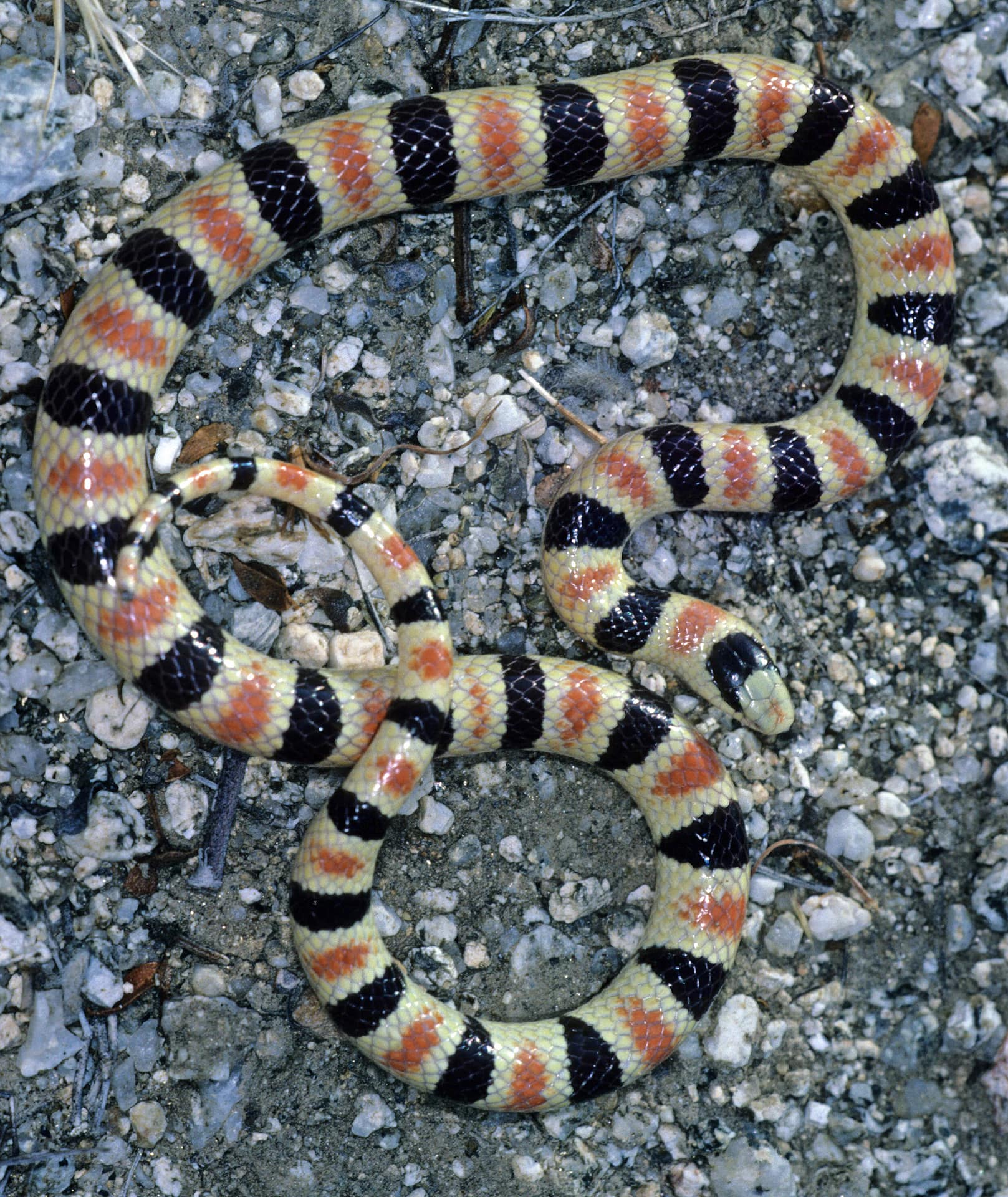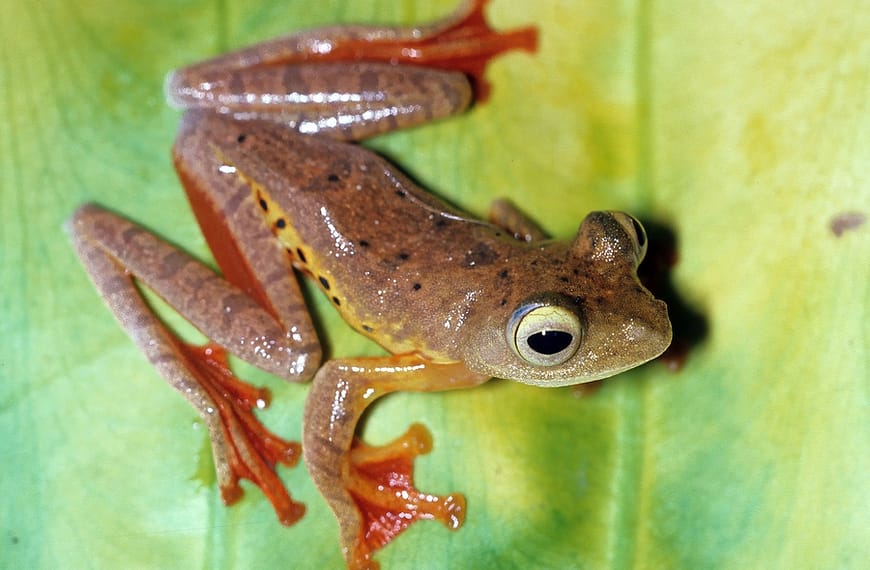Lizards and snakes living in sandy soils in dry habitats and tolerating high temperatures have been considered beneficiaries of global warming as suitable habitats expand due to climate change. However, a study by Brazilian researchers shows this is not necessarily the case, according to an article published in the Journal of Arid Environments.
“We concluded that climate change will modify the geographical distribution of reptiles and lead to the extinction of some species. That’s the opposite of the usual prediction,” said Júlia Oliveira, lead author of the article.
The study was part of her master’s research at the State University of Maranhão (UEMA) and of the project “Evolution and biogeography of the herpetofauna: patterns, process, and implications for conservation in a scenario of environmental and climate changes,” coordinated by Thaís Guedes, a professor at the State University of Campinas’s Institute of Biology (IB-UNICAMP) and Oliveira’s research supervisor.
“The species we studied have the peculiarity of being adapted to sandy soil habitats, which confers traits such as reduced or absent limbs, reduced eyes, and raised rostral scales. These are adaptations of their bodies for living in this type of environment. As a result, the areas suited to these species now and in the future depend on specific soil conditions,” Guedes said.
The researchers analyzed occurrence records for ten species of psammophilous squamates (five lizards and five snakes) adapted to sandy soil and found in the region known as the South American Diagonal of Open Formations (DOF) or Dry Diagonal (DD), comprising the Caatinga and Cerrado biomes in Brazil, and the Chaco biome in Argentina and Paraguay.
They added data on the current climate, soil types, and other environmental variables associated with these animals’ ability to survive in the habitats concerned. They then simulated best-case and worst-case scenarios for greenhouse gas emissions to see what these areas would be like in 2040 and 2060 in accordance with the projections of the Intergovernmental Panel on Climate Change (IPCC).
The models also identified suitable areas for the species that have not yet been surveyed on the ground to find out whether the animals in question live there. According to the researchers, these areas should be prioritized for exploration and conservation purposes. The areas concerned, which included the São Francisco River dunes in Bahia state and sandy soil patches in the Caatinga in Piauí state, were found to be excellent habitats for the species, some of which are endemic.
Extinction and habitat loss
The best-case scenario for 2040, which assumes moderate levels of greenhouse gas emissions, predicted habitat loss surpassing the gains in terms of range and climate for all ten species. Micrablepharus maximiliani, a blue-tailed microtelid lizard, and Vanzosaura savanicola, a red-tailed vanzosaur, would see the worst area loss. M. maximiliani would lose 88% of its habitat, while V. savanicola would lose 99% and become locally extinct.
The outlook for 2060 is not much better, even under the best-case climate change scenario. All ten species would again undergo habitat loss, ranging from 2.5% to 100%. V. savanicola would become extinct, as would Rodriguesophis iglesiasi (Gomes’s Pampas Snake) and Phalotris matogrossensis (the Mato Grosso burrowing snake). Two other lizards and a snake would lose 60%-82%.
The worst-case scenario for 2040 also predicted more losses than gains for all species, two of which would lose more than 76%. The worst-case scenario for 2060 predicted even higher losses. There would be higher gains for some species than under other scenarios, but the losses would be greater, and V. rubricauda, another redtail vanzosaur, would become extinct.
For the researchers, the results of the study are particularly alarming because this kind of threat has been overlooked for reptiles that burrow in sandy soil.
They note that the most recent nationwide assessment of endangered reptiles by the Chico Mendes Institute for Biodiversity Conservation (ICMBio), an arm of the Brazilian Ministry for the Environment and Climate Change, was conducted in 2022 and did not consider climate change as a risk factor, although it did use the same criteria as the International Union for Conservation of Nature (IUCN).
“Some of the species for which we predict major losses and even extinction wouldn’t even be endangered according to the current criteria used in this kind of threat assessment. The criteria must be changed for the next assessment,” Oliveira said.
The catastrophe predicted by the study could be averted, or at least mitigated, if new conservation units with full protection were created and/or existing conservation units were extended in an optimized manner in suitable locations for these species now and in the future.
Compared with the DOF/DD in its entirety, the protected areas in the biomes concerned are tiny, corresponding to less than 2% of the Caatinga, 10% of the Cerrado, and 9% of the Chaco.
“Our study shows that future climate conditions may undermine the effectiveness of the existing conservation units in terms of protecting the diversity of these reptiles,” Guedes said, explaining that while 27 protected areas have been created in the last six years in the DOF/DD, less than 16% of the total area protected by conservation units in the Cerrado and Caatinga is suitable as a habitat for the species of lizards and snakes covered by the study, according to the climate change scenarios used.
The authors conclude that the outlook for psammophilous squamates may resemble the predictions made for birds, plants, and mammals in the Caatinga by other groups, whose research has pointed to the likelihood of species homogenization, with a few generalists replacing rarer specialist species.
“The good news arising from the study is the potential for discovery of new areas with occurrences of reptiles adapted to living in sandy soil. On the other hand, the findings should be considered a warning that future climate scenarios must urgently be included in conservation planning for a changing planet,” Guedes said.
Citation
Oliveira JS et al., 2024. Climate change in open environments: Revisiting the current distribution to understand and safeguard the future of psammophilous squamates of the Diagonal of Open Formations of South America, Journal of Arid Environments DOI: 10.1016/j.jaridenv.2023.105117












